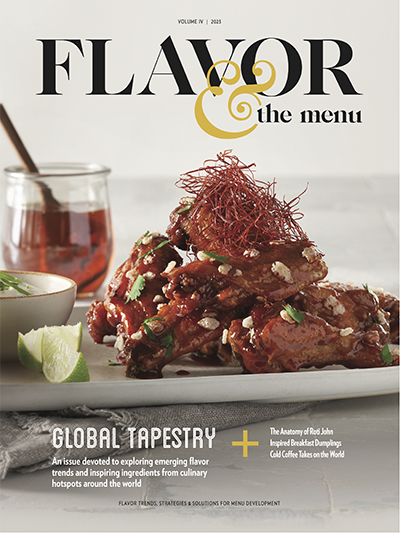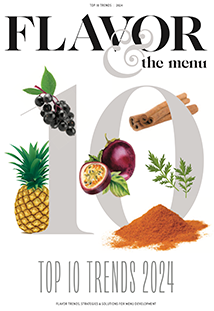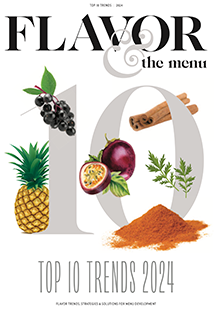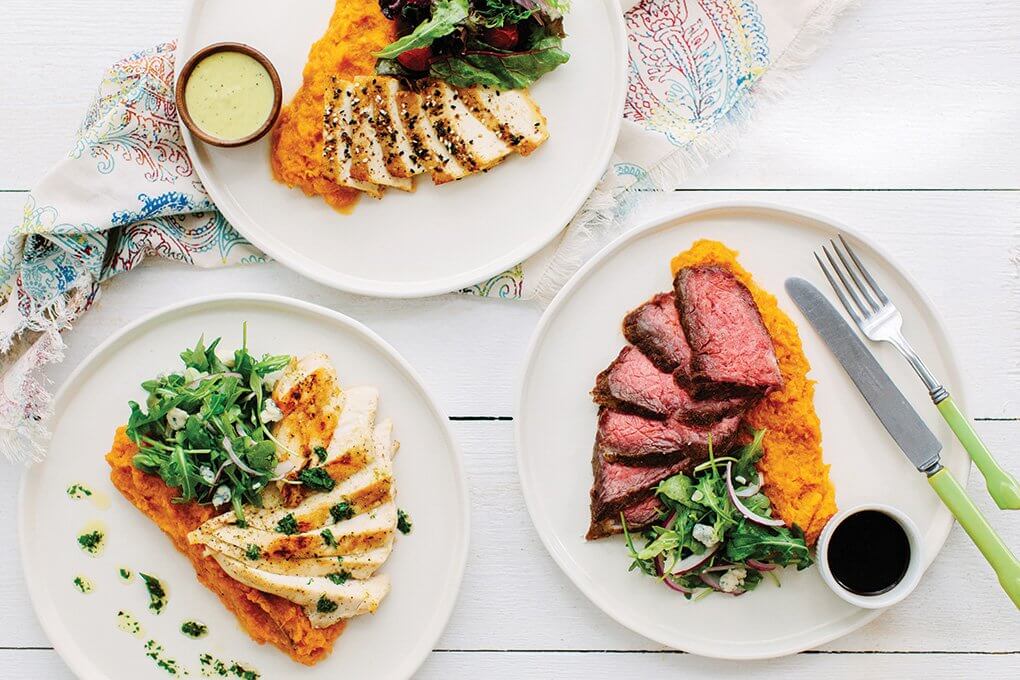Understanding and reacting to modern values around dining habits is crucial in protecting and building business. Early seeds sparked farm-to-table, seasonality, artisanship—all cues that signify a level of care and culinary craft. But consumer expectation focused on independents in those early days. Embracing these values in other segments has been slower and more sporadic, and sometimes a little clunky. Enter innovating fast-casual concepts. They’ve changed the game on so many levels. A large number of them were born with mindfulness coded into their DNA. Their mission statements come to life in every last detail—from menu items to plateware to lighting. The imperative, now, is to adopt mindfulness.
With fast casuals feeding diners with routine frequency—weekday lunches in particular—the expectation has changed. The demand for the values they see reflected in that space will only grow. They’ll look for those values in other segments. Just as forward-thinking universities are shaping palates and preferences among future diners, modern fast casuals are doing the same—only the impact is more immediate because it’s with current foodservice customers.
What are diners looking for? The new mindful mission is an umbrella trend that includes a number of modern values: sustainability, clean labels, transparency and authenticity. Underpinning all of this is the flavor imperative. This modern mindfulness puts flavor development at the epicenter of the value system. It’s not about wholesomeness or better-for-you. It’s about feel-good food with flavor. Roasted carrots are now cumin-and-coriander-roasted heirloom carrots, found at Tava Kitchen, a fast casual that serves up Indian-inspired food pulling from South Asian culinary tradition and Californian culinary heritage.
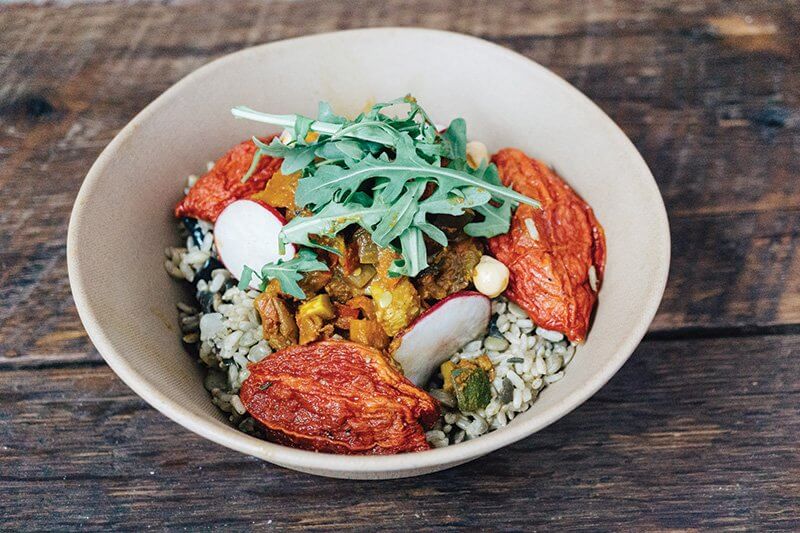
At plant-based fast casual Shouk, in Washington, D.C., the Ratatouille Rice & Lentil Bowl is topped with roasted tomato “bursts,” radish, chickpeas, arugula and creamy sesame-seed sauce.
At Lemonade—a West Coast cafeteria-style concept—grilled chicken breast cedes to braised vindaloo chicken thighs with tomato, onion and fenugreek. At Boston-based B.Good, a burger upgrades to an all-natural, house-ground burger, maybe topped with bacon, jalapeño slaw and jalapeño ranch. And at Modern Market, a Denver, Colo.-based fast casual, a breakfast sandwich touts cage-free eggs, nitrate- and hormone-free bacon and provolone on ciabatta.
“This holistic philosophy is one of the main reasons driving a number of consumers to visit one place over another,” says Maeve Webster, president of Menu Matters foodservice consultancy. “It’s not because there is one effort or one ingredient an operator is making an effort with, but a philosophy that’s driving the development of the entire menu, the design of the kitchen, the processes used, the suppliers selected, and the elements used to build out the space. This mindfulness is what will ultimately connect an operator to a guest on a far deeper level than a section of the menu, or called out menu items, or an LTO.”
Today’s mindfulness is a flavor story with a meaningful narrative. “It’s the ultimate story that can be told to a consumer to build trust, create a personal and emotional connection, and create a compelling competitive positioning built around flavor,” says Webster.
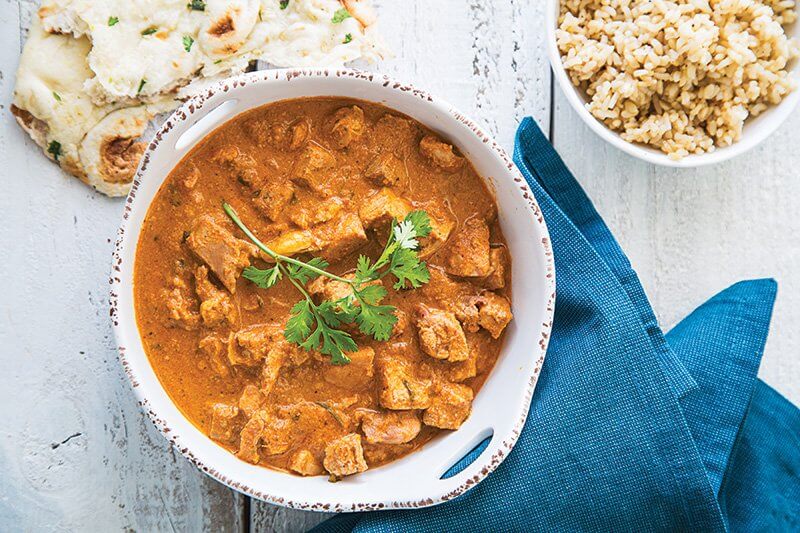
Tava Kitchen’s Chicken Tikka features all-natural, hormone-free chicken, in keeping with Tava’s philosophy of a mindful menu.
The Main Character: Flavor
Although mindfulness isn’t an ingredient trend or a global cuisine trend, it’s still rooted in flavor. The backbone, the character and the plot around the new mindfulness all carry a flavor imperative. There’s a strategic thoughtfulness at play here, building complex, lingering, sometimes surprising flavor. But it’s not a free fall either. As with most sustaining trends, menu development must tether back to familiarity.
“There is a simplicity part of the equation that’s very important,” says Hasnain Zaidi, co-founder and COO of Tava Kitchen, based in the San Francisco Bay Area. “The menu needs to be approachable, not overtly intimidating. Our challenge is getting flavor complexity onto the menu while keeping it approachable,” he says. “We don’t want to dumb it down. We want to make it simple.”
The concept offers made-to-order wraps, rice and salad bowls. Its Chicken Tikka is its most popular menu item, starring all-natural, hormone-free chicken roasted and served in a light tomato cream sauce. “We close the deal by giving out samples,” says Zaidi.
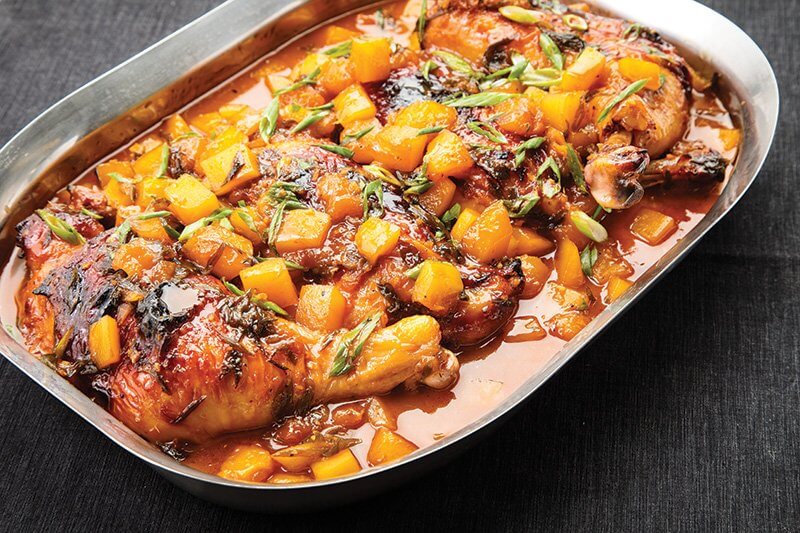
Soy-Roasted Chicken Thighs with Thai chile-mango glaze are one of the offerings at Lemonade in California, where emphasis is on seasonal, handcrafted dishes boasting complex,
well-developed flavor.
Mindfulness around flavor development is evident throughout the menu. “We put a lot of braises on the menu, lots of slow-roasted meats,” says Zaidi. “The quality of the sourcing becomes even more important.” Examples include grass-fed braised beef roasted for six hours in a tomato-vinegar sauce, and grass-fed lamb meatballs braised in a smoky tomato-yogurt sauce. Flavor-building continues with customizable garnishes, like three-pepper jicama or pickled vegetables. The lamb meatballs, he reports, are performing surprisingly well. “If you do anything too fancy, you’ll turn them off. The meatball format takes away intimidation. The fact that they’re grass-fed and flavored with cilantro and mint adds to the complexity of the story.”
When Modern Market, with 22 units in Colorado, Texas and Maryland, opened in 2009, it was out front on this trend. Nate Weir, director of culinary operations, agrees with the strategy of approachability. “For us to be successful, we have to be approachable. The average person has to be able to embrace it or we won’t be able to affect change in the food system,” he says. His strategy around testing new flavor combinations takes shape around seasonal menus. “We balance new ingredients that I’m excited about with other flavors our guests know.” Last spring’s LTO of a Greenberry Salad saw goat cheese, strawberries, red onion and lemon-maple vinaigrette, garnished with hemp seeds and crispy chickpeas. Another LTO success was the vegetarian eggplant sandwich, which switched out mayonnaise for harissa tahini. “We also had charred onion in there,” says Weir. “Those flavors are a little out there, but they add so much without alienating guests.”
Painting the Picture
Visual cues are crucial in relaying mindfulness by building mood, setting the scene, painting the backdrop. They are inextricably tied to authenticity of experience, and fast casuals are putting forth a model that works well. “It’s a pleasant environment that’s colorful and contemporary, perhaps with wood details; a modern look,” says trends analyst Kara Neilsen. “They typically show a commitment to the environment. Those cues are everywhere, and it’s a holistic experience. They’re walking the walk.”
Tava’s Zaidi explains this part of mindfulness as a restaurant concept’s mindset. “This is where fast casual is at the vanguard of this movement. When you walk into a fast casual, you just get it. It’s the physical space, the way you frame your menu, the flavors you choose to highlight,” he says. At Tava, freshly cut sunflowers sit in a vase on every table. The food is served out of real pots, not steam tables. “This is how we telegraph fresh—that we care about the details,” he says. “The pots, for instance, showcase the quality of the food that’s inside them.”
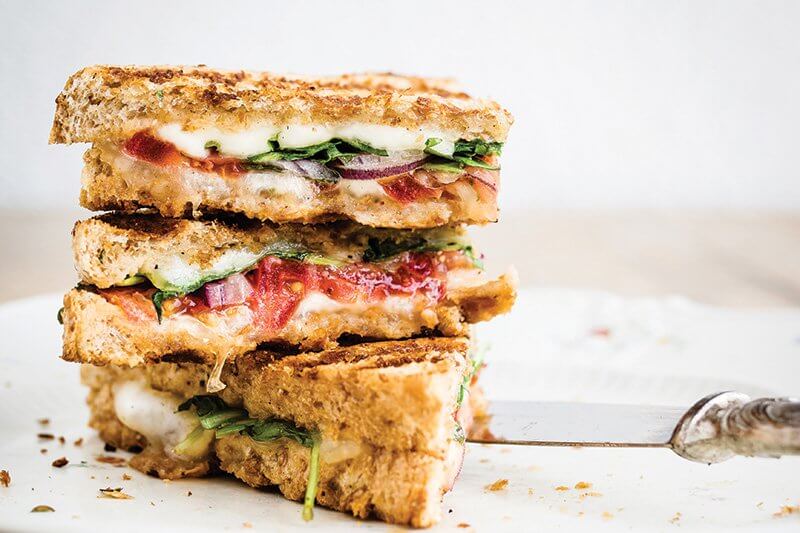
The mindful approach means paying close attention to the entire experience, from the sourcing to the layering of complex flavors.
The more today’s consumers see these cues, embrace them and expect them, the more imperative it is to learn from them. “The messaging around these places makes you trust them,” says Nielsen. “We believe that the food is fresher, and that they care about sourcing. We have learned to read those cues.”
Modern Market’s Weir stresses the importance of transparency. “We have cues throughout the restaurant that relay our values. We’re not too overt about it though. I was once told that the average person has room for only three things to care about. We’re about transparency, so we’re strategic in what we display on our shelves.” Current items include cans of organic tomatoes and jars of preservative-free pickles. “We call out a few things on our menu, like our tomato sauce, so our guests know that we get the message about organic. We communicate the ‘never-ever’ statement for our steak. We’re trying to build our trust factor, so those visual cues help us share that we’re paying attention to important values,” he says.
The Back Story
Led by demand from younger generations coupled with the growing prevalence of fast casuals delivering on these demands, the need for transparency in sourcing, community outreach and fair labor practices shows no signs of abating. It’s no longer sufficient to tuck a mission statement in a dusty corner of the website. It needs to be tangible. “It’s so important for operators to let diners know what they’re doing,” says Nielsen. “Millennial consumers are so savvy about finding out what they want to know about brands.”
The modern back story, then, is driven by transparency. It’s about clean labels, suppliers, community. It’s about telling a compelling story that resonates with today’s diners.
“We spend a lot of time building relationships with suppliers,” says Dan Long, chief culinary officer and co-founder of Mad Greens, a fast-casual salad concept based in Golden, Colo. “Our marketing is built around showcasing the relationship between our brand and suppliers of our food. We’re in Colorado. We can’t grow lettuce year-round. But we can still have valuable relationships with suppliers who aren’t local. We can tell their story of sustainability, water usage and labor.”
Long says the foundation of Mad Greens, which now has 29 locations, is transparency. “That’s our approach. We’re not everything to everybody but we want to tell you what we’re doing. It’s that openness and mindfulness around what we do that lends authenticity and is important to consumers today.”
Clean labels are a big part of the back story in this new mindful menu mission. Panera has laid down the gauntlet, helping to frame what clean means and why consumers should care. Modern Market is close to claiming all of its products as clean label. “There’s been a lot of research and a lot of time formulating an opinion,” says Weir. That thoughtfulness is built into this trend. He maintains a living document with three columns under these headings: “This is Fine,” “Prefer to Avoid” and “Hell No.” “We started with that third column of firm no’s and then worked on the middle column,” he says. “It’s a core value for us, so we’re investing our time and resources in it.”
Ensuring a long-term outlook on mindfulness in menu development, culinary education programs are placing a greater emphasis here, influencing the future generation of chefs and menu developers. “This is something we are taking to heart,” says T.J. Delle Donne, assistant dean of Johnson & Wales College of Culinary Arts. “In our new bachelor’s degree in culinary arts, we are looking at mapping outcomes such as sustainable sourcing and elevated craft skill in a new set of labs we are referring to as ‘chef-driven fast casual.’”
Embracing the mindful trend holds long-lasting opportunity because it connects with diners on a value system that is not going away. It’s deepening and widening. “This is not food for healthfulness sake or solely for the sake of the environment,” says Maeve Webster. “This food could exist on any menu and be appreciated. Its mindfulness is simply an added bonus. The operators who have truly mined this menu mission philosophy have broadened their market well beyond the ‘tree-hugging, granola’ operators of 10 years ago. The potential for further growth is significant.”
The reach will extend into all foodservice channels and all menu sections, from starters to desserts. Consumer expectations continue to shift, thanks to the advances in the fast-casual segment. Mindfulness around messaging, thoughtfulness of intent, careful attention to details around sourcing and flavor-building—this is what will impact foodservice for years to come.

